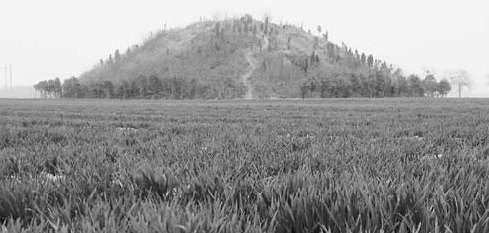Chasing mounds of history
Updated: 2012-09-16 08:04
By Chen Nan (China Daily)
|
||||||||
|
Video series Kan Xuan: Millet Mounds explores the imperial tombs in China. Provided to China Daily |
For the first 20 over years of her life, Kan Xuan had never set foot in the north of China.
"My friends told me to go to Northwest China because I would find lots of big mounds there," recalls the 40-year-old who rose to fame as a visual artist.
"Big mounds" means tombs the size of mountains in some dialects of the north, and she has been intrigued by it since her friends planted the concept on her mind.
Born in Xuancheng, Anhui province, Kan now lives and works in Beijing and Amsterdam. When Kan was pursuing her art studies abroad, she read many books about tombs, including Imperial Tombs in China, published in Chinese in the 1980s.
"The pictures were all black-and-white in the book. Though not clear, they stimulated an interest in me to explore," she recalls.
In early 2012, Kan spent more than 100 days traveling 28,000 kilometers to do research and shoot video with a crew of four. The experience resulted in an upcoming screening of 173 stop-action videos named Kan Xuan: Millet Mounds, each of which unfolds before one of China's known extant imperial tombs.
"The videos are a meditation on China's imperial past and a broad survey of its present," the artist says.
Kan's lens captures, catalogues, and personalizes a centuries-long lineage of history and power.
Through the process of searching and recording these ancient sites - some of which are major tourist sites while others linger in disrepair - Kan engages with contemporary rural China in all its 21st-century complexity, as a persistent past incorporates itself into the quotidian realities of the present.

She used her smartphone to film and edit, which is flexible and efficient. Her assistants did research for her and then Kan read the history and stories behind each tomb before shooting.
"Sometimes the gossip stories about the tombs are very interesting, which affected my attitude of shooting or editing," Kan says. "Those tombs are about death, but not heavy and sad. Those imperial tombs represent power and history."
Though ancient China was dominated by male power, Kan also focused on female tombs. She made diaries about each tomb, introduced the history of each tomb and the background of each tomb, which are all displayed in the screening.
"When I stood among grasses and looked at the big mounds, I felt peaceful. The wind was strong, people would ride bicycles passing by. The tombs fit in the picture very well," Kan says.
Humor, lightness and grace characterize the works of the artist, as well as deep irony and dramatic sceneries. She likes using simple and clear images to express her desire for a more direct, simple and original understanding of life.
chennan@chinadaily.com.cn
(China Daily 09/16/2012 page15)

 'Taken 2' grabs movie box office crown
'Taken 2' grabs movie box office crown
 Rihanna's 'Diamonds' tops UK pop chart
Rihanna's 'Diamonds' tops UK pop chart
 Fans get look at vintage Rolling Stones
Fans get look at vintage Rolling Stones
 Celebrities attend Power of Women event
Celebrities attend Power of Women event
 Ang Lee breaks 'every rule' to make unlikely new Life of Pi film
Ang Lee breaks 'every rule' to make unlikely new Life of Pi film
 Rihanna almost thrown out of nightclub
Rihanna almost thrown out of nightclub
 'Dark Knight' wins weekend box office
'Dark Knight' wins weekend box office
 'Total Recall' stars gather in Beverly Hills
'Total Recall' stars gather in Beverly Hills
Most Viewed
Editor's Picks

|

|

|

|

|

|
Today's Top News
Health new priority for quake zone
Xi meets US top military officer
Japan's boats driven out of Diaoyu
China mulls online shopping legislation
Bird flu death toll rises to 22
Putin appoints new ambassador to China
Japanese ships blocked from Diaoyu Islands
Inspired by Guan, more Chinese pick up golf
US Weekly

|

|







